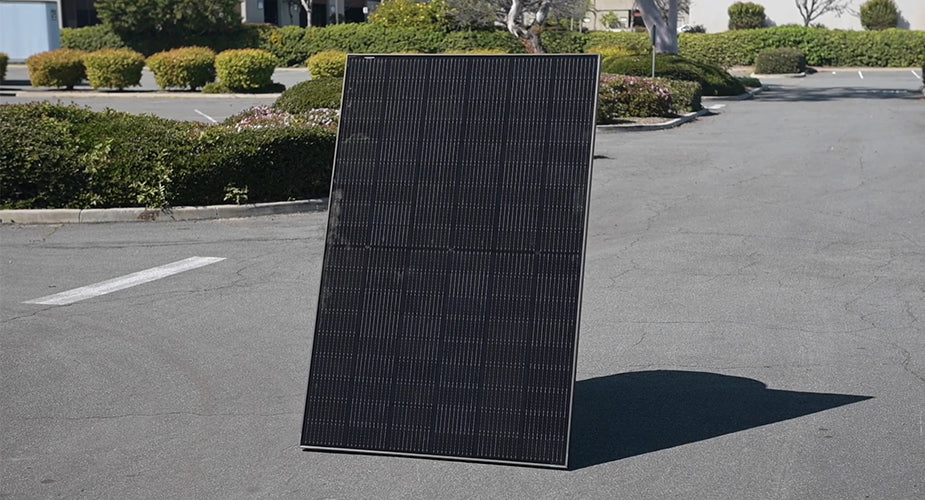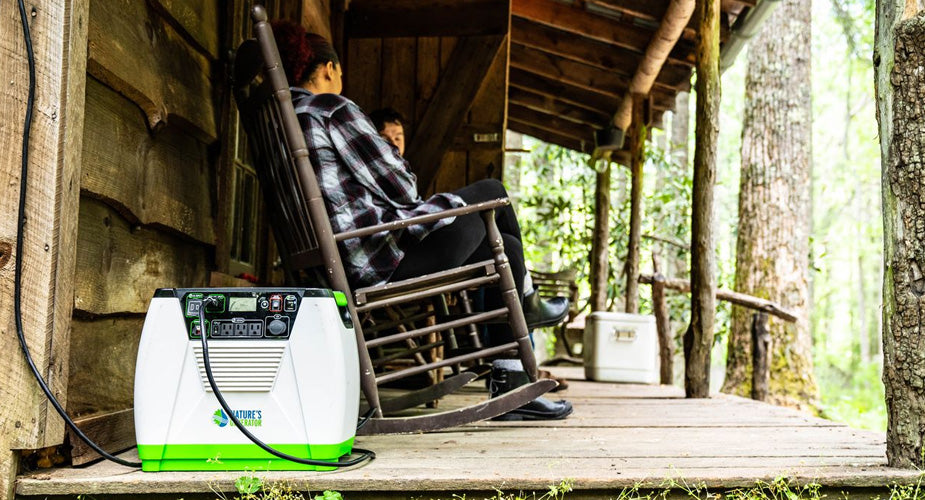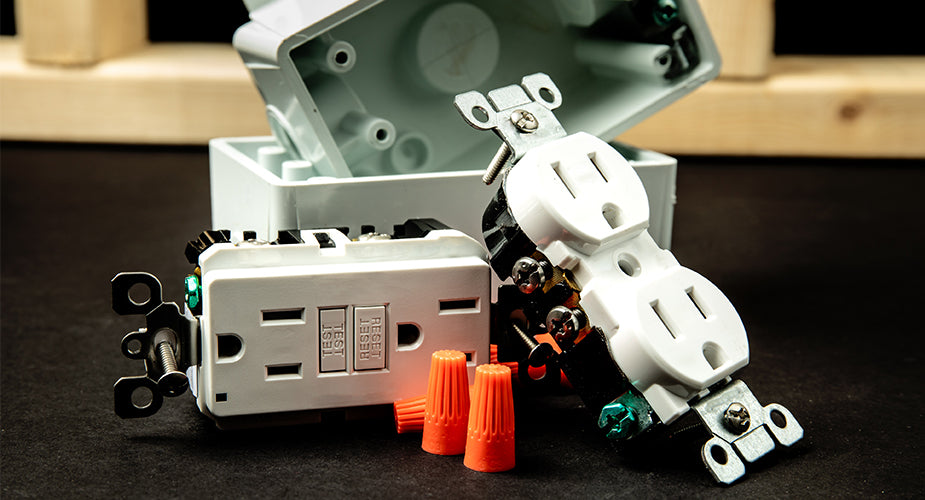There is no denying that more and more people are recognizing the power and benefits of going solar. But with the many choices available in the market, finding the right type can be a great challenge, especially for first-time solar users. This is especially true regarding the upfront cost that comes with it. The price of solar panels in the US can vary depending on your specific situation and needs.
On average, a typical traditional 6kW solar panel system – a good fit for many homes – costs around $13,000 after installation. However, the total price can range from $8,500 on the low end to $35,000 or more for high-end systems.
Portable solar panels, a popular choice for outdoor enthusiasts and those seeking off-grid power solutions are priced based on their power output. Portable solar panels with low wattage can be as cheap as $50 and as pricey as $1000 or more for the high-wattage variant.
Let us find out the key factors that influence the cost of solar panels, payment options available for interested buyers and lastly, how to choose the best payment method for your solar panel system.
Factors that Affect the Cost of Solar Panels
Several factors influence the price of solar panels. Below is a breakdown of the most important ones such as the power capacity, panel type, and installation fee. Understanding each factor will help you see why solar panel systems cost the way they do.
-
System Size and Wattage: As a general rule, bigger systems with higher wattage capacities translate to higher upfront costs. However, they also generate more electricity, potentially offsetting the initial investment through reduced reliance on the grid. Carefully consider your home's energy consumption to determine the optimal system size that meets your needs without exceeding your budget.
Let us take Nature’s Generator Power Panel as an example. This 100 100-watt monocrystalline solar panel has a reinforced 3.2mm safety and anti-reflective glass that can provide recharging power for Nature's Generator 1800 Lithium, Nature’s Generator 1800W, and Nature’s Generator Elite 3600W. Bundled with either a 50-foot cable and/or MC4 branch connector, this 100-watt solar power panel bundle is priced at $329.99.
Armed with the latest and leading solar technologies (PERC, Half Cell, and 10 Busbar), Nature’s Generator 410 Watt Solar Panel is another example of a portable solar pane but with a higher wattage. Priced at $999.99 for 2 Packs, this solar panel bundle can boot up Nature’s Generator Powerhouse. It can also power up one Eco-Lithium System.
- Panel Type and Efficiency: Solar panels come in various types, with efficiency being a key differentiator. Monocrystalline panels, for instance, boast the highest efficiency but are on the steeper price side of things. Polycrystalline panels offer a good balance between efficiency and cost. Finally, there are the thin-film panels that are the most affordable. However, they are also the least efficient.
- Installation Costs: Labor rates, permits, and other fees associated with the installation process can vary significantly depending on your location and the complexity of your roof. Factors like roof type (composition shingles are generally easier to work with than metal roofs), accessibility (steeper roofs or those with obstructions may require additional safety measures), and any necessary reinforcements due to roof age or potential weight limitations can all impact installation difficulty and cost. Getting quotes from multiple qualified installers in your area can help you compare pricing and find the best value.
- Location: Geographic location plays a role in determining the overall cost. Areas with a high cost of living typically have higher solar installation costs due to prevailing labor rates and permitting fees. Make sure to consider this when budgeting for your solar panel system.
- Government Incentives and Rebates: Federal and state incentives can significantly reduce the upfront cost of solar panels. The federal solar investment tax credit currently covers 30% of the installation cost, and some states offer additional rebates or tax breaks. These incentives make solar power a more attractive option. Researching available programs in your area can help determine the true cost after these credits and rebates are applied.
Solar Panel Payment Options
In the US, there are several ways to pay for solar panels, each with its advantages and considerations. Knowing and understanding the payment options available will help you make an informed decision.
Cash Purchase
This option offers the greatest long-term financial benefit. You'll own the system outright and avoid interest charges, maximizing your savings over time. You will also likely qualify for all available federal and state incentives that can significantly reduce the upfront cost. However, this requires a significant amount of money which may not be available for everyone.
Solar Loan
Similar to financing a car, you borrow money to cover the cost of the system and repay it with interest over a set term (typically 5-25 years). This offers predictable monthly payments and allows you to benefit from tax credits and incentives that can bring down the effective cost of the system. Interest rates may vary so shop around to find the best rates.
Lease or Power Purchase Agreement (PPA)
In this option, you don't own the solar panels. A solar company installs and maintains the system, and you purchase the electricity it generates at a predetermined rate. This requires no upfront cost, making solar more accessible to homeowners who could not afford a cash purchase or loan. However, you won't qualify for federal tax credit and may not see significant long-term savings compared to traditional electricity rates. The price you pay per kilowatt-hour for solar energy may be higher than the prevailing utility rate, and the contract may lock you in for a long time.
Home Equity Loan or Line of Credit (HELOC)
This option leverages the equity you've built up in your home to access funds for solar panels. Interest rates can be lower than unsecured solar loans because you will use your home as collateral. However, this approach comes with some risk, as you could face foreclosure if you default on the loan. Consulting with a financial advisor is highly recommended in this scenario. This ensures that this option aligns with your financial goals and risk tolerance.
Property Assessed Clean Energy (PACE) Financing
Available only in selected areas, this option allows you to finance solar panels through a property tax assessment. This can be an attractive option for those who don't qualify for traditional loans or prefer not to use their home as collateral. PACE financing offers extended repayment terms and avoids using your credit score. However, as mentioned earlier, it is not widely available and there may be restrictions or limitations depending on your location. Be sure to research the terms carefully to understand potential drawbacks such as higher interest rates or impact on property taxes.
Choosing the Best Payment Option
Now that you know all your options, choosing the right one will depend on several factors such as your financial situation, budget, and priorities. Ask yourself the questions below as they can serve as your guide before you seal the deal.
- Upfront affordability: Can you afford a cash purchase, or do you need financing options to spread out the cost?
- Long-term savings: Are you looking for the most significant long-term financial benefit (cash purchase) or a lower initial barrier to entry (lease)?
- Ownership preference: Do you want to own the system and take advantage of all incentives (cash purchase, solar loan), or prefer a hands-off approach with minimal upfront costs (lease)?
- Risk tolerance: Are you comfortable using your home as collateral (HELOC), or would you prefer to avoid such risk (cash purchase, solar loan)?
Final Thoughts
In conclusion, as the popularity of solar energy continues to rise, navigating the myriad options available can be daunting, particularly for newcomers to solar technology. One of the primary challenges lies in understanding the upfront costs associated with various solar panel systems. Key factors influencing costs include system size, panel type, efficiency, installation expenses, and geographic location. Moreover, government incentives and rebates can significantly offset initial expenses. Payment options such as cash purchases, solar loans, leases, home equity loans, and PACE financing offer different advantages and considerations, catering to varying financial situations and preferences. Ultimately, choosing the optimal payment method entails weighing factors such as upfront affordability, long-term savings, ownership preference, and risk tolerance. By carefully evaluating these factors, individuals can make informed decisions that align with their financial goals and energy needs when investing in solar panel systems.





